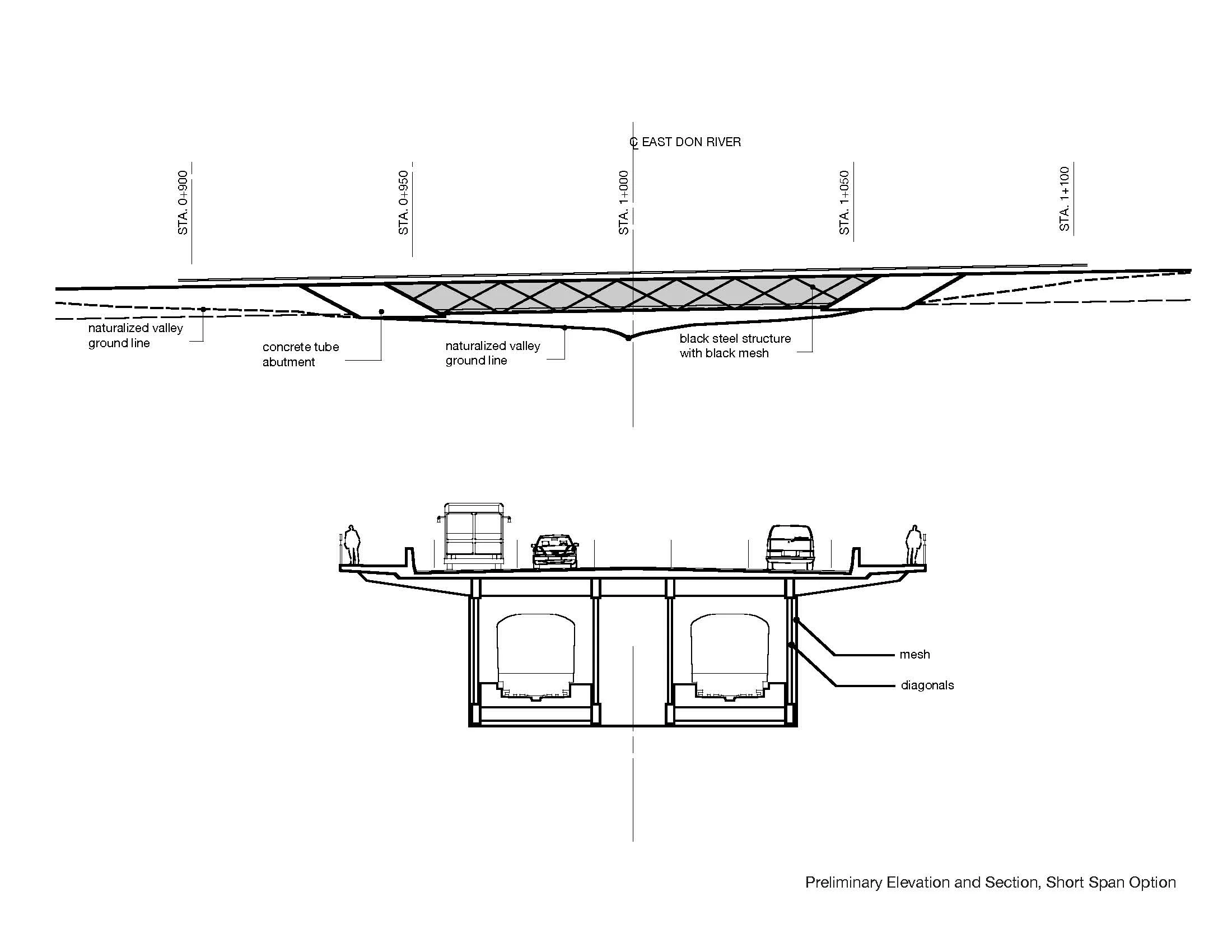east don crossing
Toronto, Ontario | Completed
The crossing of the East Don with the new subway extension at Yonge Street is a crossing within a context of a historic transportation corridor, a historic village area and an environmental area of a floodplane as well as sensitive viewscapes. Modifying the landscape and streetscape in this area will be significant to many stakeholders and as such, a clear and coherent approach to the crossing will clarify decisions which need to be made and result in a final built form which is meaningful and appropriate to its context. This interim status report is meant to clarify the approach which has been taken to date in attempting to find solutions for the crossing.
Yonge Street - a historic transportation corridor
Yonge Street was one of the first roads within the area of Toronto. It was laid out in 1795 to aid in defence of Upper Canada as well as open up trade routes. The crossing of a major river with a major route led to several settlements along the street including the area now known as Thornhill which was first established in 1794 by Asa Johnson and Nicholas Miller. By 1802 a mill was operating in Thornhill.
Yonge Street has, since its inception been used as a major transportation corridor – first as a cart track, then as a stone paved route for stage coaches. For a period beginning in 1898 it had a electric rail line facilitating public transportation along this corridor and has functioned continuously since then as a major arterial road. The extension of the subway line continues Yonge Street’s history of transportation and is another significant event in Yonge Street’s history.
The East Don – a landscape greenway
The crossing of the East Don is currently provided by a concrete culvert. The green corridor of which the East Don is the main artery is almost completely blocked by the existing Yonge Street crossing. Movement of wildlife as well as people is constricted and forced over Yonge Street at this location. This project presents the opportunity to remove the blockage of the East Don River and reinstate the river and its floodplane to their original character. This would provide not only opportunities for animals and wildlife to begin to use this corridor again but also for pedestrian paths along the route. This requires further consultation with the Region to investigate whether their regional plan incorporates a pedestrian route along this corridor however it is an opportunity to bring recreation and appreciation of the landscape to the river’s edge.
Heritage Approach
To date our approach to design of the new crossing has been governed by the Standards and Guidelines for the Conservation of Historic Places in Canada document: a collaborative effort among the federal, provincial, territorial and municipal governments, heritage conservation professionals, heritage developers and other Canadians. This standard states that the general approach to historic conservation should be to:
“Conserve the heritage value and character-defining
elements when creating any new additions to a historic place or any related new construction. Make the new work physically and visually compatible with, subordinate to and distinguishable from the historic place.”
As such we believe that what is built at the crossing should be an intervention that does not upstage the historic fabric of the site and is distinguishable from the current historic material in the area in a dignified and respectful way. Building within our time and place, and recognizing that what is built will become part of the historic fabric in the future, our approach has been to place within the landscape an element which is obviously from our time but respectful of the past and something which adds a visually appealing element to the landscape.
Summary - Designing within an Urban Fabric
The approach taken to the context of the crossing will determine the final design of the crossing. By clarifying the approach, we are clarifying our goals for the crossing.
This approach recognizes that history is at all times being accreted. We are extending history with the extension of the Yonge street subway and weaving another level of infrastructure into an existing urban fabric.
The goal for this crossing is that it enhances the community, landscape and environment. Community will be enhanced by the careful consideration of streetscaping and addition of possible pedestrian access to the river and the river’s edges as well as to the green corridor of the East Don. Landscape will be enhanced by addition of a visually compelling structure as well as an openness under the structure. Environment will greatly benefit from a naturalization of the East Don floodplane.
Concept
concept
CREDITS
Concept Design:
AIR Infrastructure (formerly Infrastructure Studio)
Annalisa Meyboom




